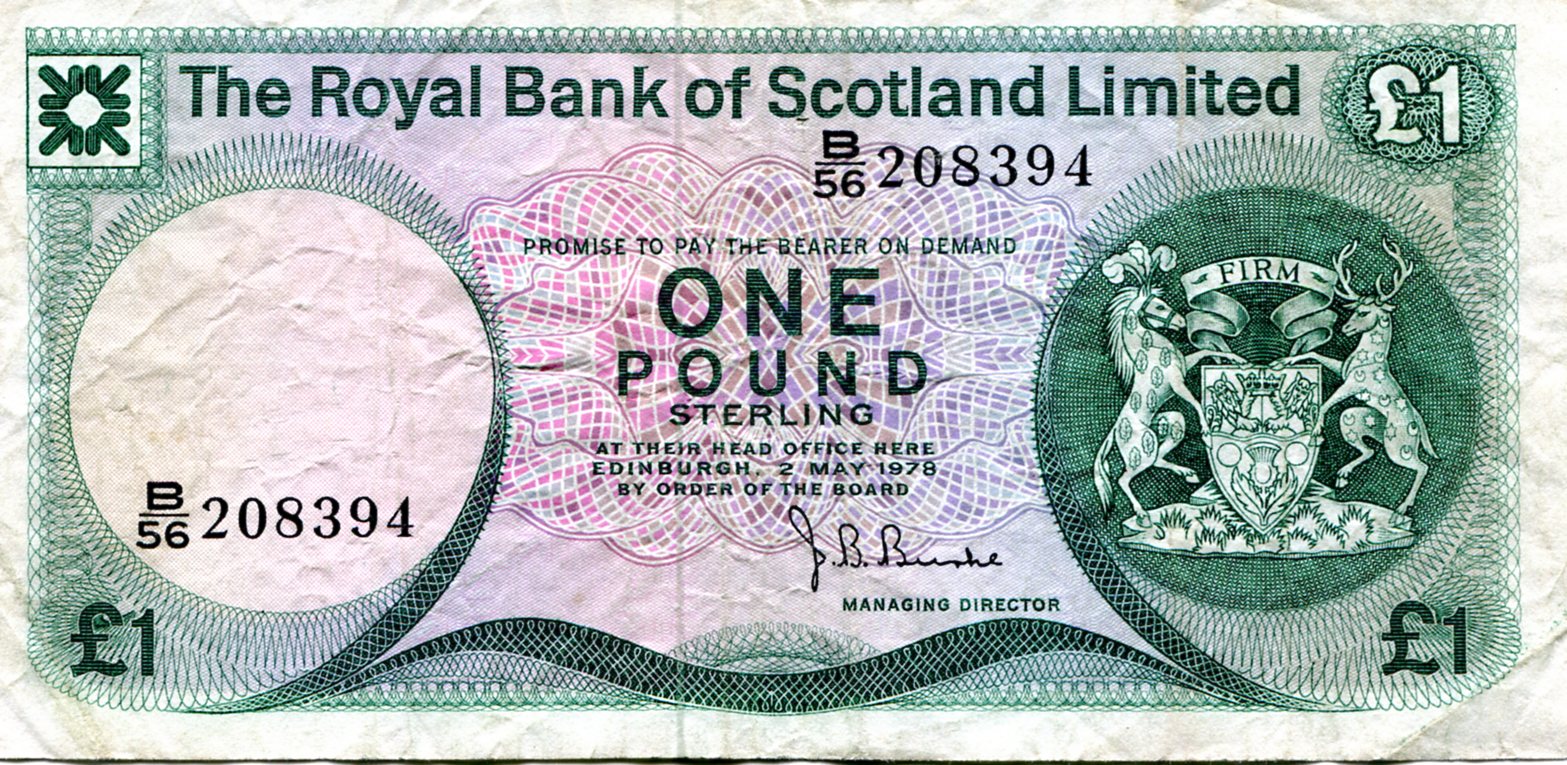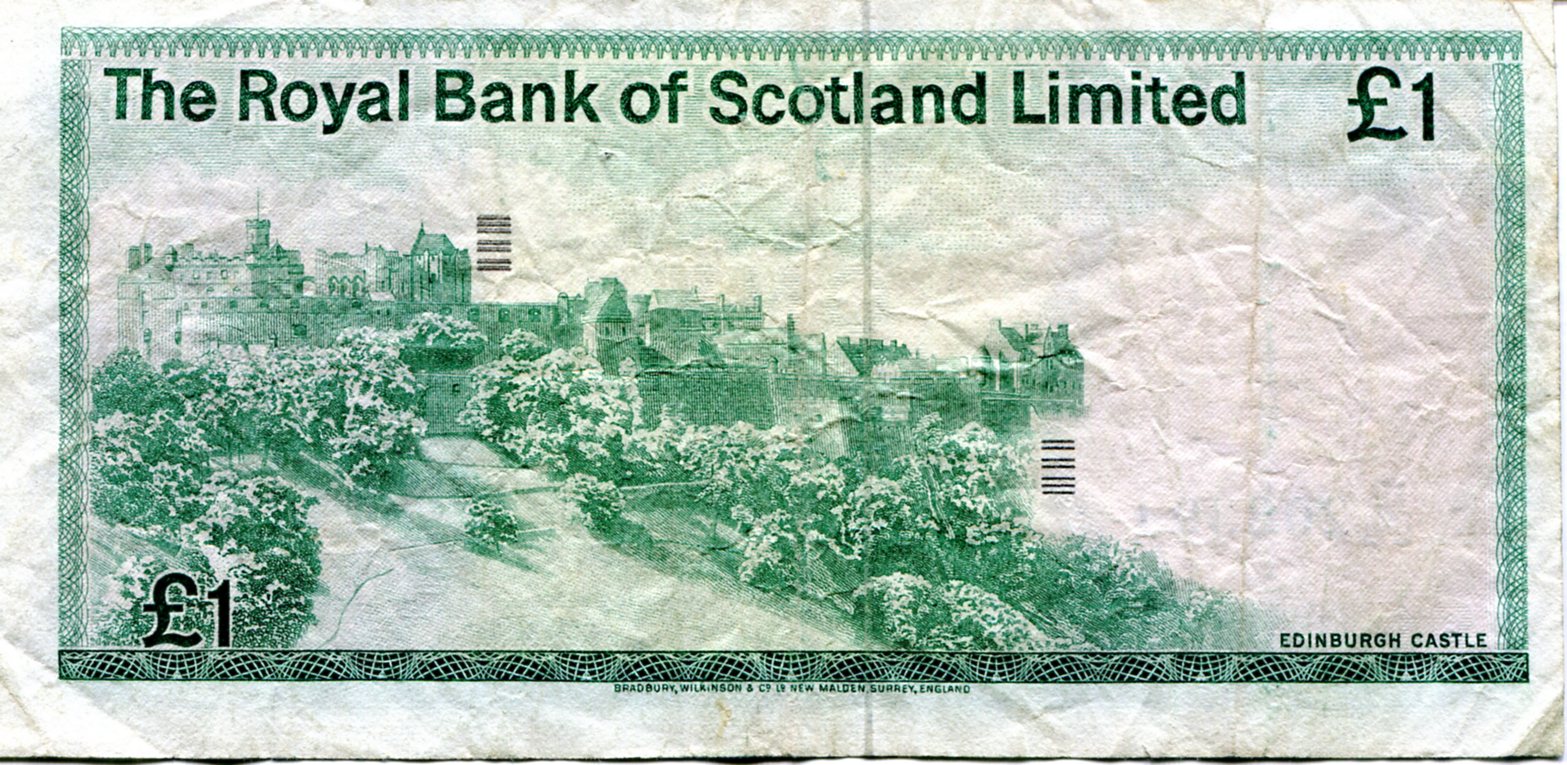What to do here in the pit of winter, with its cold — though not quite as cold this year as usual — and daylight that passes so quickly? Take a close look at your collection of colorful but essentially worthless banknotes from far-flung nations. Or in one case, a subnational banknote. This one, dated 1978:
 Not too many subnational territories get their own banknotes, but Scotland does. I might have gotten this in change during my ’83 visit to the UK, which took me close to Scotland compared to where I am most of the time, but not really that close. Or maybe I picked it up in ’88. I suspect that by ’94, most cashiers in England weren’t bothering with £1 notes of any kind.
Not too many subnational territories get their own banknotes, but Scotland does. I might have gotten this in change during my ’83 visit to the UK, which took me close to Scotland compared to where I am most of the time, but not really that close. Or maybe I picked it up in ’88. I suspect that by ’94, most cashiers in England weren’t bothering with £1 notes of any kind.
Scottish notes circulate in the rest of the UK, and will until that day when the Scots, peeved about Brexit, pull the trigger on independence. At which point they might go ahead and use the euro, and wind up like Greece. But that’s all mere conjecture.
For now, three Scottish banks are authorized to issue banknotes: the Bank of Scotland, the Royal Bank of Scotland, and Clydesdale Bank. According to the RBS, it’s been issuing banknotes since 1727 and has an average of £1.5 billion worth of notes in circulation on any given day. It’s also the only one of the three to keep issuing £1 notes.
In October, the RBS issued its first polymer banknote, which was a £5 note. Next will be a £10 note. The one pound probably isn’t worth the trouble.
